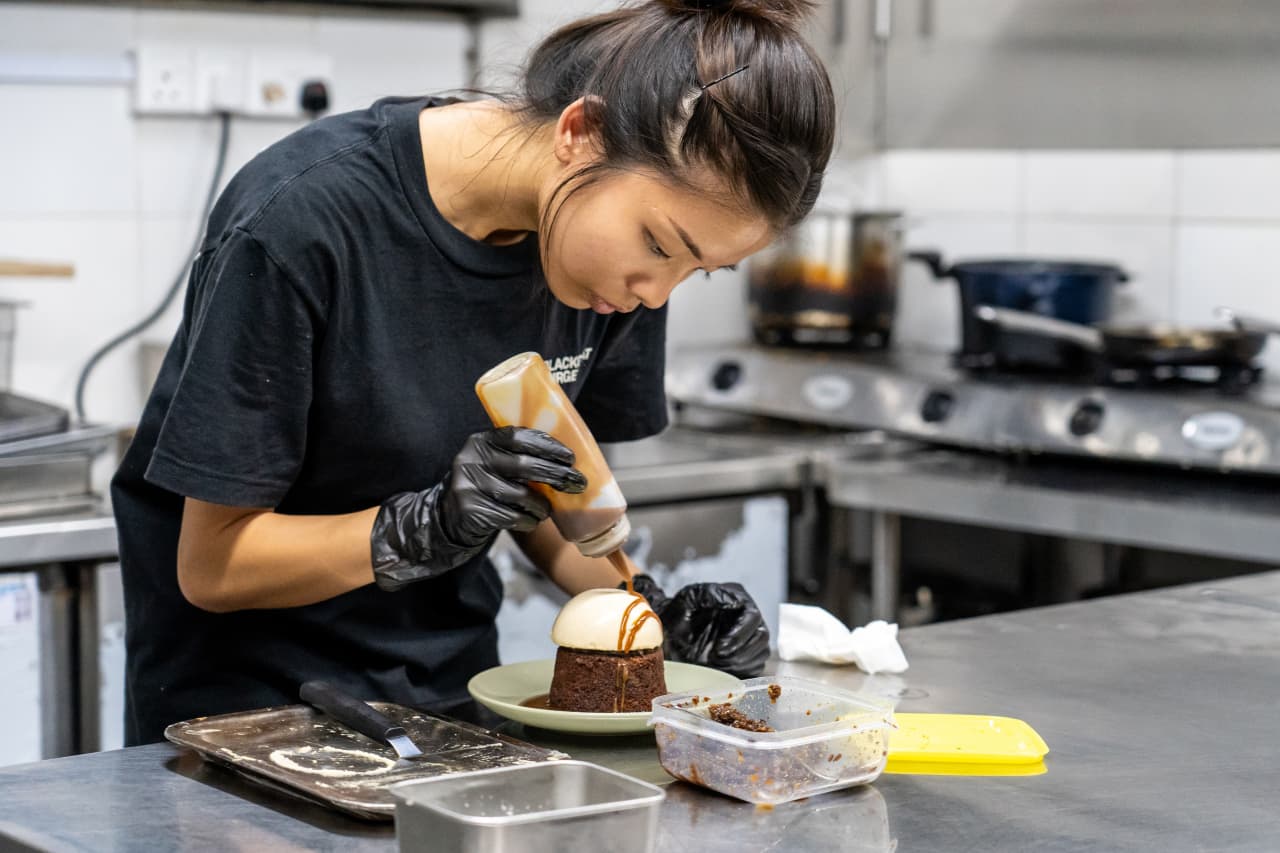Slack? Phone? Teams? Zoom? There Are Too Many Work Communications
Workplaces become saturated with ways to talk, often breeding mistakes and misunderstandings
Lisa Donovan was juggling pings from multiple Slack channels and email windows when she inadvertently sent a sensitive company document to the wrong person.
The part-time accountant for a Virginia-based academic coaching firm toggles between 30 instant-messaging channels, four client-email accounts and at least a dozen phone or video calls a day, she says.
“It’s, like, ‘Are we on Zoom? Are we on Teams? Did I respond to that? Did I say it right?’” says Ms. Donovan, who works from Richmond, Texas.
There are so many ways to communicate at work that our communication is breaking down. Bosses say missed messages and crossed signals waste time and trigger mistakes, while research suggests that so much virtual communication makes it easier to snipe at or ignore co-workers. Then there’s the stress of having to stay on top of so many different channels all the time.
Microsoft Corp.’s Teams use has surged to more than 280 million monthly active users. Zoom Video Communications Inc.’s business customers have nearly tripled to more than 210,000 since the start of the pandemic, and Salesforce Inc.’s Slack is also growing. In many cases, the clients of each overlap and use the tools on top of emails, texts and in-house messaging forums.
All of it is enough to make workers long for the days of complaining about email-inbox overload.
“It’s overwhelming,” says Wendy Weinberger, Ms. Donovan’s boss and head of the firm. The company’s IT department was able to successfully recall the sensitive email.
In a 2022 Harris Poll survey of more than 1,200 workers and executives, bosses estimated that their teams lost an average 7.47 hours—nearly an entire day—to poor communications a week. Based on an average salary of $66,967, the lost time translates to a cost of $12,506 per employee a year, according to the report conducted on behalf of Grammarly, a proofreading software company.
A new study from executive-search firm Korn Ferry found that communication misfires have helped to make some work relationships less pleasant and collegial. Among 357 professionals surveyed in recent weeks, nearly half said that remote work made it easier for colleagues to get away with rude behaviour such as interrupting on calls and not returning emails.
Remote work has accentuated colleagues’ different communication habits, and their potential to clash, some employees say.
“These tools that are meant to make communication easier have a dark side,” says Michele Simon, a Los Angeles-based lawyer specialising in workplace trauma. A new Pepperdine University study on workplace toxicity that surveyed 800 office workers found that 35% cited communication problems as the top barrier to getting ahead in today’s workplace—ahead of office politics (29%), small budgets (26%) or ineffective plans (20%).
Michelle Sooknanan says that at her previous job as a sales manager for a Florida food manufacturer, her boss would often call her impromptu via video as she worked from her home office in Portsmouth, N.H.
She says she found the unscheduled calls to her desktop computer stressful and asked that, outside of scheduled calls with the team, she be contacted only by email or instant message. Her manager emailed a couple of days later that her request couldn’t be accommodated, and that video would sometimes be necessary.
Ms. Sooknanan says the tension contributed to her eventual departure. The company didn’t respond to requests for comment.
Multiple modes of communication get more complex as the number of people on a conversation thread grows, says Jessica Carlson, a former director of supply-chain operations at Nestlé SA who left the company in March. Wrestling with post-Covid supply-chain challenges often took place over multiple time zones and forums.
“You could have an email chain, a text thread, a videoconference call and an in-person one-on-one about the same topic all within 24 hours,” says Ms. Carlson, who has since founded consulting firm headStrat Solutions.
Many companies have largely left it to teams and co-workers to sort out how they communicate, which can add to the confusion. For workers feeling overwhelmed, making a clear choice ahead of time can help, says Sally Susman, chief corporate affairs officer at Pfizer Inc. and author of a recent book on improving workplace communications.
She suggests asking teammates or other colleagues what their communication preferences are, while also being unafraid to state your own.
In the absence of in-person social cues, she adds, the voice becomes more important. Use it to transmit collegiality and other positive qualities that would ordinarily be picked up in person. Even in email or text messages, small touches like “Hi there” can exude warmth in formats that ordinarily feel cold and transactional.
Some companies are trying to come up with new ways for workers to get messages across. Archer Daniels Midland Co. has corralled its modes of communication by linking instant messaging, email, video and social-media style updates into one central hub.
It’s “air-traffic control,” says Brett Lutz, vice president of global communications at Archer Daniels Midland. He says the forum, powered by workplace communications software company Firstup, lets workers see stories, images and other updates.
Shopify Inc., the e-commerce and retail technology company, recently instructed staff to shift to Meta Platforms Inc.’s Workplace, which combines instant messaging, videoconferencing and other communications tools.
“Email hasn’t evolved in the last 30 years. And it still sucks,” Shopify Chief Operating Officer Kaz Nejatian wrote in a January memo to staff.
To get there, though, employees would have to check their email for an invitation to join. “Didn’t get that email? Check Okta or ping #help-chaos,” he continued, referring to two more ways employees could inquire about an invite.
 Copyright 2020, Dow Jones & Company, Inc. All Rights Reserved Worldwide. LEARN MORE
Copyright 2020, Dow Jones & Company, Inc. All Rights Reserved Worldwide. LEARN MORE
This stylish family home combines a classic palette and finishes with a flexible floorplan
Just 55 minutes from Sydney, make this your creative getaway located in the majestic Hawkesbury region.
No trip to Singapore is complete without a meal (or 12) at its hawker centres, where stalls sell multicultural dishes from generations-old recipes. But rising costs and demographic change are threatening the beloved tradition.
In Singapore, it’s not unusual for total strangers to ask, “Have you eaten yet?” A greeting akin to “Good morning,” it invariably leads to follow-up questions. What did you eat? Where did you eat it? Was it good? Greeters reserve the right to judge your responses and offer advice, solicited or otherwise, on where you should eat next.
Locals will often joke that gastronomic opinions can make (and break) relationships and that eating is a national pastime. And why wouldn’t it be? In a nexus of colliding cultures—a place where Malays, Indians, Chinese and Europeans have brushed shoulders and shared meals for centuries—the mix of flavours coming out of kitchens in this country is enough to make you believe in world peace.
While Michelin stars spangle Singapore’s restaurant scene , to truly understand the city’s relationship with food, you have to venture to the hawker centres. A core aspect of daily life, hawker centres sprang up in numbers during the 1970s, built by authorities looking to sanitise and formalise the city’s street-food scene. Today, 121 government-run hawker centres feature food stalls that specialise in dishes from the country’s various ethnic groups. In one of the world’s most expensive cities, hawker dishes are shockingly cheap: A full meal can cost as little as $3.
Over the course of many visits to Singapore, I’ve fallen in love with these places—and with the scavenger hunts to find meals I’ll never forget: delicate bowls of laksa noodle soup, where brisk lashes of heat interrupt addictive swirls of umami; impossibly flaky roti prata dipped in curry; the beautiful simplicity of an immaculately roasted duck leg. In a futuristic and at times sterile city, hawker centres throw back to the past and offer a rare glimpse of something human in scale. To an outsider like me, sitting at a table amid the din of the lunch-hour rush can feel like glimpsing the city’s soul through all the concrete and glitz.
So I’ve been alarmed in recent years to hear about the supposed demise of hawker centres. Would-be hawkers have to bid for stalls from the government, and rents are climbing . An upwardly mobile generation doesn’t want to take over from their parents. On a recent trip to Singapore, I enlisted my brother, who lives there, and as we ate our way across the city, we searched for signs of life—and hopefully a peek into what the future holds.
At Amoy Street Food Centre, near the central business district, 32-year-old Kai Jin Thng has done the math. To turn a profit at his stall, Jin’s Noodle , he says, he has to churn out at least 150 $4 bowls of kolo mee , a Malaysian dish featuring savoury pork over a bed of springy noodles, in 120 minutes of lunch service. With his sister as sous-chef, he slings the bowls with frenetic focus.
Thng dropped out of school as a teenager to work in his father’s stall selling wonton mee , a staple noodle dish, and is quick to say no when I ask if he wants his daughter to take over the stall one day.
“The tradition is fading and I believe that in the next 10 or 15 years, it’s only going to get worse,” Thng said. “The new generation prefers to put on their tie and their white collar—nobody really wants to get their hands dirty.”
In 2020, the National Environment Agency , which oversees hawker centres, put the median age of hawkers at 60. When I did encounter younger people like Thng in the trade, I found they persevered out of stubbornness, a desire to innovate on a deep-seated tradition—or some combination of both.
Later that afternoon, looking for a momentary reprieve from Singapore’s crushing humidity, we ducked into Market Street Hawker Centre and bought juice made from fresh calamansi, a small citrus fruit.
Jamilah Beevi, 29, was working the shop with her father, who, at 64, has been a hawker since he was 12. “I originally stepped in out of filial duty,” she said. “But I find it to be really fulfilling work…I see it as a generational shop, so I don’t want to let that die.” When I asked her father when he’d retire, he confidently said he’d hang up his apron next year. “He’s been saying that for many years,” Beevi said, laughing.
More than one Singaporean told me that to truly appreciate what’s at stake in the hawker tradition’s threatened collapse, I’d need to leave the neighbourhoods where most tourists spend their time, and venture to the Heartland, the residential communities outside the central business district. There, hawker centres, often combined with markets, are strategically located near dense housing developments, where they cater to the 77% of Singaporeans who live in government-subsidised apartments.
We ate laksa from a stall at Ghim Moh Market and Food Centre, where families enjoyed their Sunday. At Redhill Food Centre, a similar chorus of chattering voices and clattering cutlery filled the space, as diners lined up for prawn noodles and chicken rice. Near our table, a couple hungrily unwrapped a package of durian, a coveted fruit banned from public transportation and some hotels for its strong aroma. It all seemed like business as usual.
Then we went to Blackgoat . Tucked in a corner of the Jalan Batu housing development, Blackgoat doesn’t look like an average hawker operation. An unusually large staff of six swirled around a stall where Fikri Amin Bin Rohaimi, 24, presided over a fiery grill and a seriously ambitious menu. A veteran of the three-Michelin-star Zén , Rohaimi started selling burgers from his apartment kitchen in 2019, before opening a hawker stall last year. We ordered everything on the menu and enjoyed a feast that would astound had it come out of a fully equipped restaurant kitchen; that it was all made in a 130-square-foot space seemed miraculous.
Mussels swam in a mushroom broth, spiked with Thai basil and chives. Huge, tender tiger prawns were grilled to perfection and smothered in toasted garlic and olive oil. Lamb was coated in a whisper of Sichuan peppercorns; Wagyu beef, in a homemade makrut-lime sauce. Then Ethel Yam, Blackgoat’s pastry chef prepared a date pudding with a mushroom semifreddo and a panna cotta drizzled in chamomile syrup. A group of elderly residents from the nearby towers watched, while sipping tiny glasses of Tiger beer.
Since opening his stall, Rohaimi told me, he’s seen his food referred to as “restaurant-level hawker food,” a categorisation he rejects, feeling it discounts what’s possible at a hawker centre. “If you eat hawker food, you know that it can often be much better than anything at a restaurant.”
He wants to open a restaurant eventually—or, leveraging his in-progress biomedical engineering degree, a food lab. But he sees the modern hawker centre not just as a steppingstone, but a place to experiment. “Because you only have to manage so many things, unlike at a restaurant, a hawker stall right now gives us a kind of limitlessness to try new things,” he said.
Using high-grade Australian beef and employing a whole staff, Rohaimi must charge more than typical hawker stalls, though his food, around $12 per 100 grams of steak, still costs far less than high-end restaurant fare. He’s found that people will pay for quality, he says, even if he first has to convince them to try the food.
At Yishun Park Hawker Centre (now temporarily closed for renovations), Nurl Asyraffie, 33, has encountered a similar dynamic since he started Kerabu by Arang , a stall specialising in “modern Malay food.” The day we came, he was selling ayam percik , a grilled chicken leg smothered in a bewitching turmeric-based marinade. As we ate, a hawker from another stall came over to inquire how much we’d paid. When we said around $10 a plate, she looked skeptical: “At least it’s a lot of food.”
Asyraffie, who opened the stall after a spell in private dining and at big-name restaurants in the region, says he’s used to dubious reactions. “I think the way you get people’s trust is you need to deliver,” he said. “Singapore is a melting pot; we’re used to trying new things, and we will pay for food we think is worth it.” He says a lot of the same older “uncles” who gawked at his prices, are now regulars. “New hawkers like me can fill a gap in the market, slightly higher than your chicken rice, but lower than a restaurant.”
But economics is only half the battle for a new generation of hawkers, says Seng Wun Song, a 64-year-old, semiretired economist who delves into the inner workings of Singapore’s food-and-beverage industry as a hobby. He thinks locals and tourists who come to hawker centers to look for “authentic” Singaporean food need to rethink what that amorphous catchall word really means. What people consider “heritage food,” he explains, is a mix of Malay, Chinese, Indian and European dishes that emerged from the country’s founding. “But Singapore is a trading hub where people come and go, and heritage moves and changes. Hawker food isn’t dying; it’s evolving so that it doesn’t die.”
This stylish family home combines a classic palette and finishes with a flexible floorplan
Just 55 minutes from Sydney, make this your creative getaway located in the majestic Hawkesbury region.






















